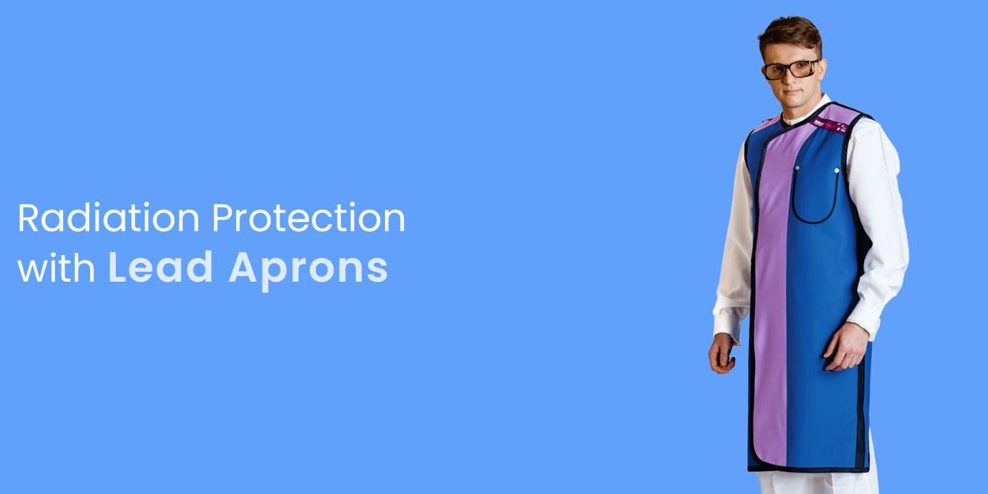Radiation protection is a crucial aspect of working in environments with x-ray fluoroscopes. Lead aprons, commonly used as protective gear, are essential in shielding personnel from harmful radiation. This blog outlines the effective and appropriate use of lead aprons, based on guidelines provided for radiological safety.
Radiation Protection Required in the Working Environment
In fluoroscopic environments, radiation protection measures are important. Personnel must wear lead aprons with at least 0.25 mm of lead equivalent to protect against patient-scattered radiation. For any part of the body that may enter the direct beam, a minimum of 0.50 mm of lead equivalent is necessary. Gonadal shielding for patients, with at least 0.25 mm of lead, should be considered when it does not interfere with the examination.
The Use of Personnel Radiation Dosimeters to Monitor Exposures
While lead aprons protect against radiation, dosimeters are used to monitor exposure levels. Not all personnel in a fluoroscopic room are required to wear dosimeters, but it is mandatory for radiological technologists and anyone operating the equipment. Individuals working more than a meter away from the patient are generally exempt from this requirement. Dosimeters are crucial for monitoring whole body radiation during extended or high-dose procedures, and must be worn at collar level and outside the lead apron for accurate readings.
Using Good Body Mechanics During Fluoroscopic Procedures
Long procedures can cause tension in the spines of workers, especially when wearing heavy protective aprons. It is essential to maintain good body mechanics to prevent back injuries. The patient table should be adjusted to a comfortable height to minimize leaning, and the image screen should be positioned to prevent eyestrain and awkward postures. Regular evaluations by occupational medicine physicians can help address persistent back issues, potentially with the use of back braces or specially designed aprons with support structures.
Specially Designed Lead Aprons
Lead aprons come in various designs to cater to different needs and to alleviate back strain. Two-piece aprons (vest and skirt) distribute weight more evenly, reducing stress on the spine. While adding an additional 0.25 mm of lead increases protection, it also significantly increases weight, which may not be practical. Advances in material technology have led to the use of lighter elements such as barium and iodine in combination with lead, reducing overall weight without compromising protection. Plastic struts and waist belts can further distribute the apron’s weight, enhancing comfort and mobility.
Criteria for Purchase, Replacement, and Repair
Selecting the appropriate lead apron involves considering regulatory requirements, proximity to radiation sources, workload, and the physical health of the individual. Workers frequently facing the radiation source should prioritize front protection, while those moving around might benefit from wrap-around aprons. Upon receipt, lead aprons should be checked for radioactivity and integrity. Annual fluoroscopic inspections ensure their continued effectiveness, with criteria established for rejecting aprons with significant defects.
Disposal of Lead Aprons
Defective aprons that cannot be repaired should be disposed of properly. Lead aprons are considered hazardous waste due to their lead content. They should be collected and boxed for disposal, following chemical waste disposal protocols to ensure environmental safety.
Lead aprons are an integral part of radiation protection in medical settings involving x-ray fluoroscopy. By adhering to guidelines on their use, monitoring radiation exposure, maintaining good body mechanics, and selecting appropriate aprons, healthcare professionals can minimize their risk of radiation exposure while ensuring a safer working environment. Proper disposal of worn-out aprons further highlights the commitment to safety and environmental responsibility.







